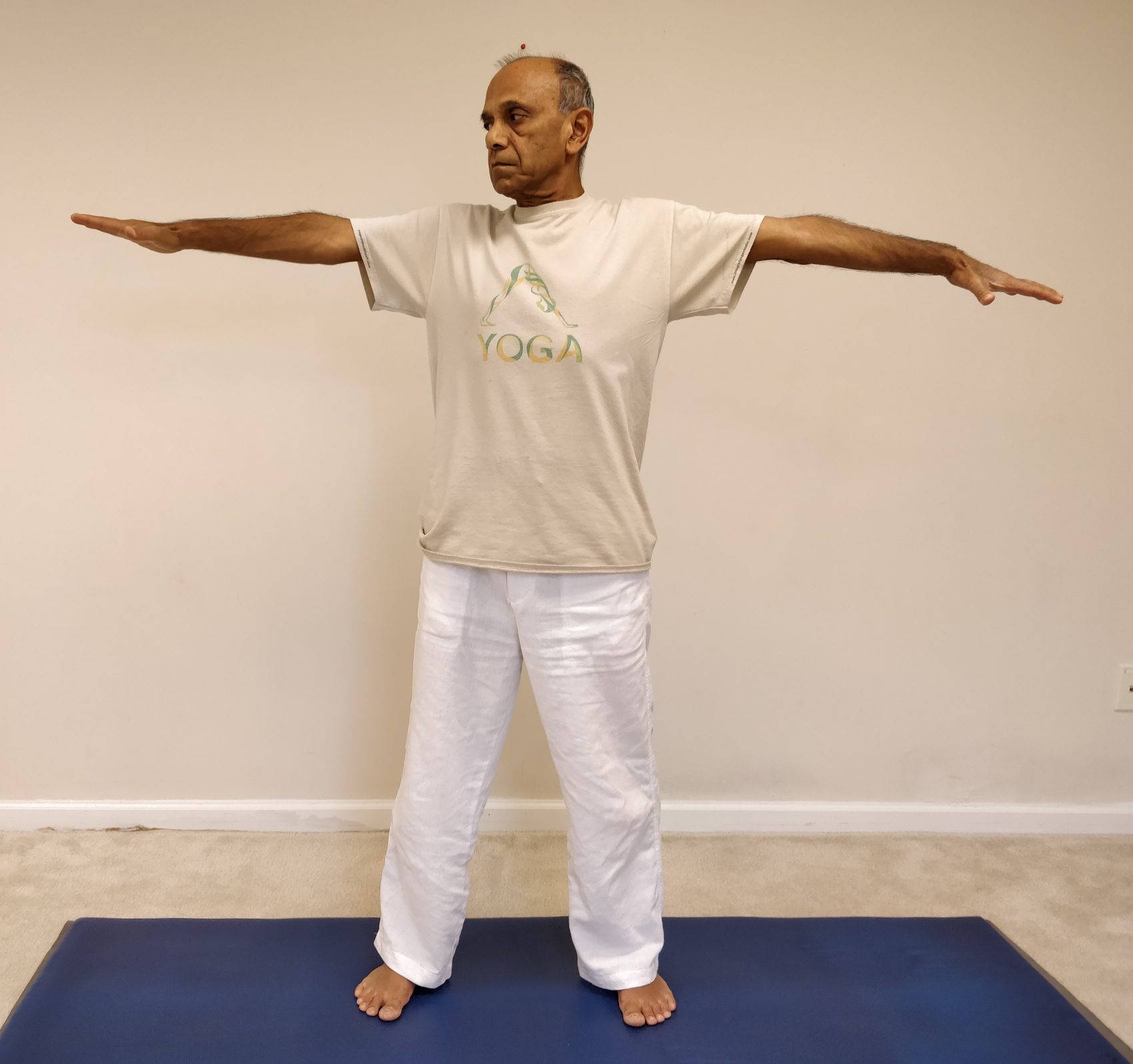
Twirling
The book Five Tibetan Rites (The ancient secret of fountain of youth) was originally published by Peter Kelder in 1939. It contains a description of five exercises, now knows as the Five Tibetan Rites. Even though most of these exercises are the ones we do in our class in one form or another (with the exception of twirling), what makes the practice challenging and enjoyable is the fact that each exercise is to be repeated 21 times.
The book is based on the experience of a British Army Colonel who visited India and Tibet seeking knowledge about some of the esoteric Eastern practices that help maintaining good physical and mental health. He ended up in a monastery in Tibet where the monks, even though advanced in biological age, looked amazingly youthful. They told him that the secret of their youthful appearance was the regular practice of these five rites. Based on the story told by the colonel, Peter Kelder wrote the above mentioned book describing in detail the practice of these five rites.
In my own practice of these five rites, I have made minor modifications to the sequence as well as the individual practices as given in the book.
In the accompanying video, my friend, Bipin Gadi, has done the demo of the practice of the five rites. I hope you will enjoy practicing along with the video.
Tibetan Rite #1: Twirling
Step-by-step
- Come to a standing position with your arms stretched out horizontal, in line with the shoulders.
- Turn the neck to look at the middle finger of the right hand. Maintain this gaze, throughout the twirling practice.
- Now, you will be twirling around yourself clockwise for 21 rounds. Try to go at a pace that is comfortable for you – not too fast or too slow. Maintain a count of your number of rotations.
- From our experience we know that after twirling around for 21 rounds when we come to a stop, the room continues to spin for some more time. It is important to maintain gaze at the finger when you come to a stop after 21 rounds until the room also comes to a full stop. Otherwise you run the risk of feeling dizzy or falling down.
- Finally, when everything seems stable, sit down in the Vajrasana (on the heels) with the eyes closed for a few moments.
Tibetan Rite #2: Camel Pose

Half Camel (Ushtrasana)
Step-by-step
- From the Vajrasana, stand on your knees and place the hands on the waist. Join the thumbs together behind the back at the lower part of the spine.
- While inhaling, push the thumbs forward, pushing the the thighs and buttocks also forward, keeping the shoulders rolled back, and tilt the head backwards. Pause briefly at the end of inhalation.
- While exhaling, straighten the body bringing the head, neck and the spine in one line, and without bending forward, slowly get back to the Vajrasana (sitting on the heels). Again, pause briefly after exhalation.
- Continue in this manner for 21 times. If you are unable to finish 21 rounds, do only as many as you are comfortable with.
- When you are done with the routine, sit in Vajrasana or Sukhasana (comfortable cross-legged) and relax for a few moments.
Tibetan Rite #3: Table Top position
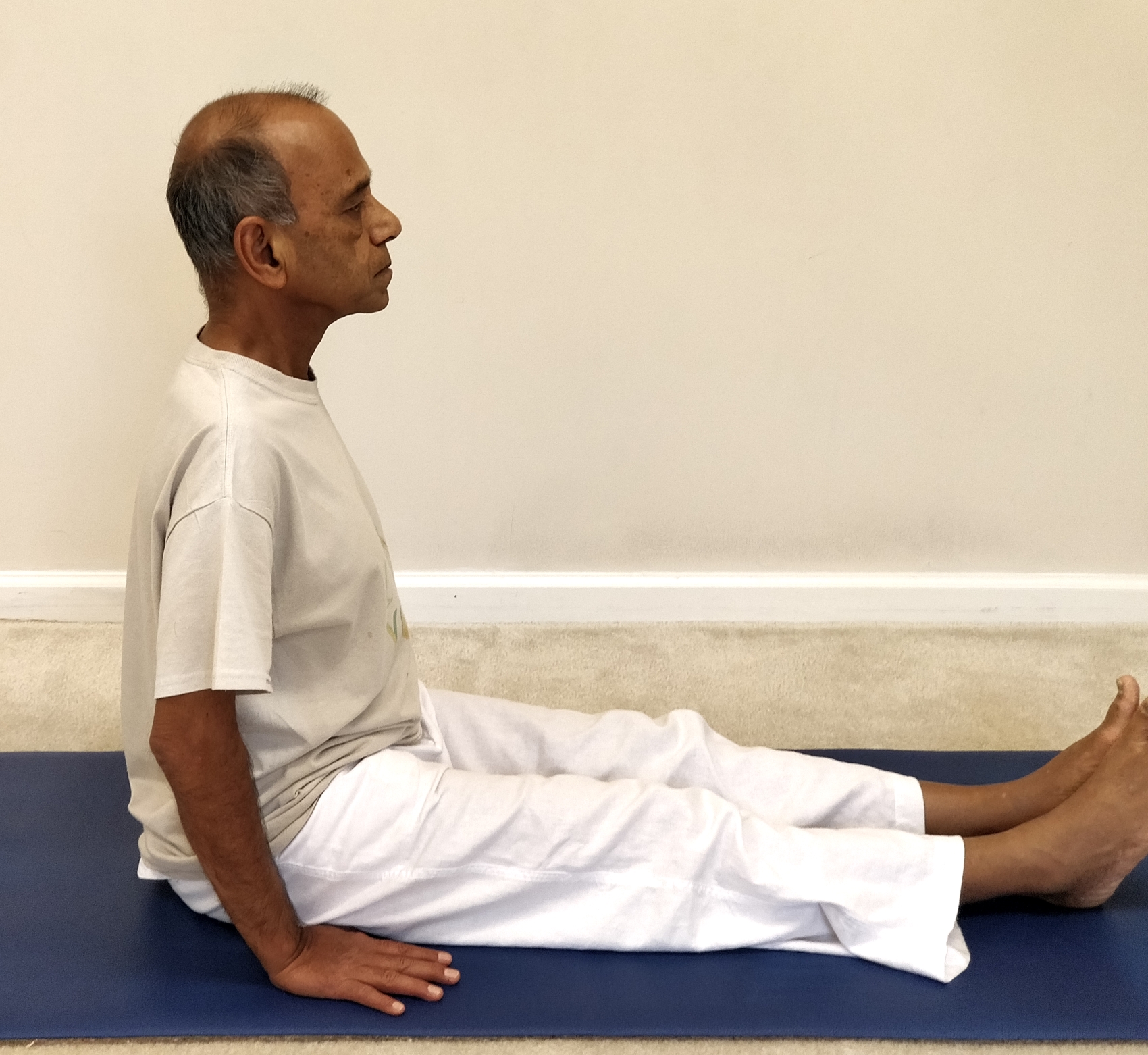
Dandasana
Step-by-step
- Sit down with the legs stretched out in front. Keep the legs straight and the feet together.
- Position the palms on the floor right next to the buttocks. While doing the table top movement, the feet and the hands will continue to remain at the same spot – they will not shift their position.
- Pressing down with the palms, while inhaling lift the buttocks up as high as they can go comfortably. Rolling the shoulders back, try to lift the chest up as well. Pause briefly in the final table top position.
- While exhaling, slowly bring the buttocks downwards; however, slide them back between the palms to the original position before resting them on the ground. Pause briefly.
- Continue in this manner for 21 times. If you are unable to finish 21 rounds, do only as many as you are comfortable with.
- When you are done with the routine, sit in Vajrasana or Sukhasana (comfortable cross-legged) and relax for a few moments.
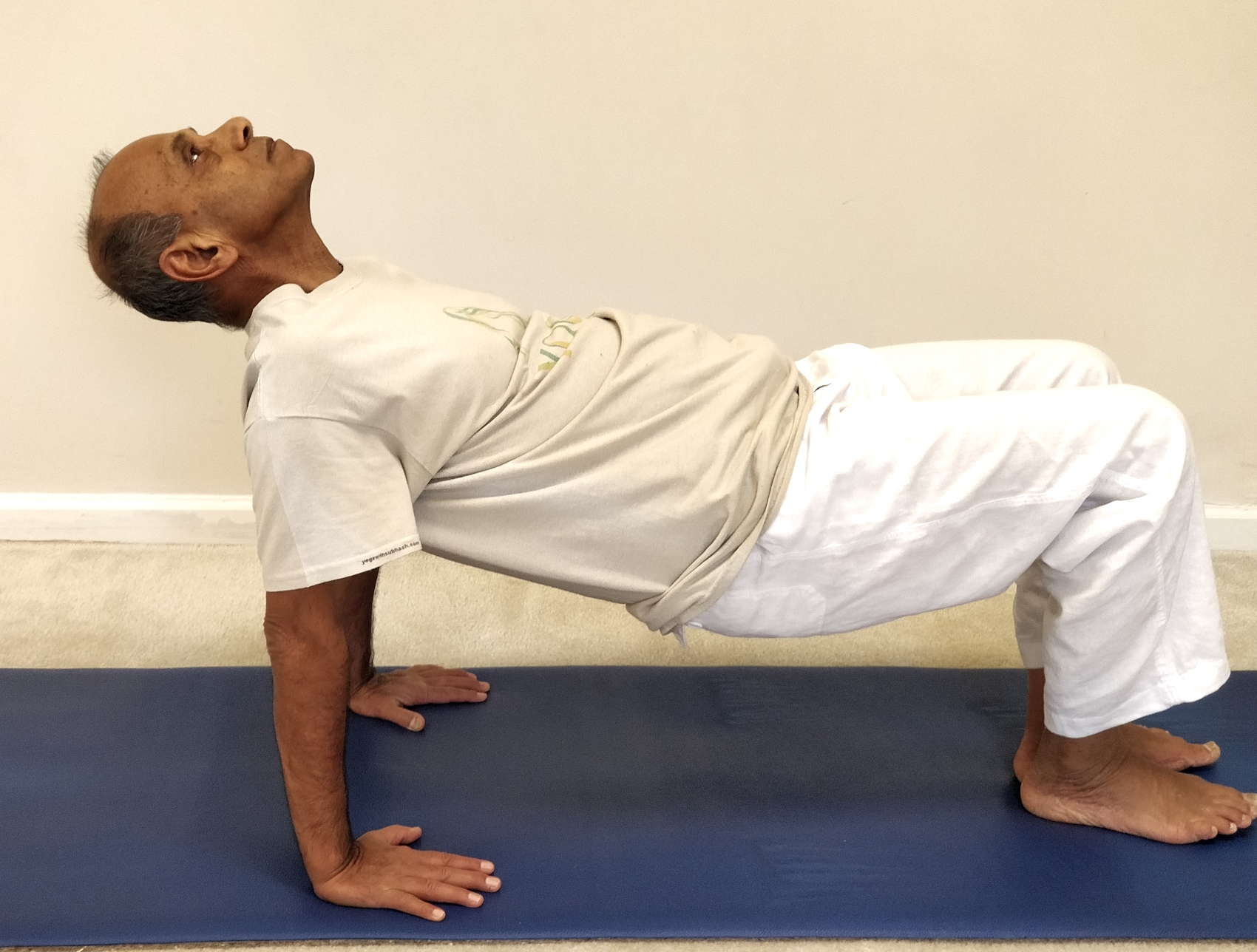
Table Top
Tibetan Rite #4: Boat pose variation
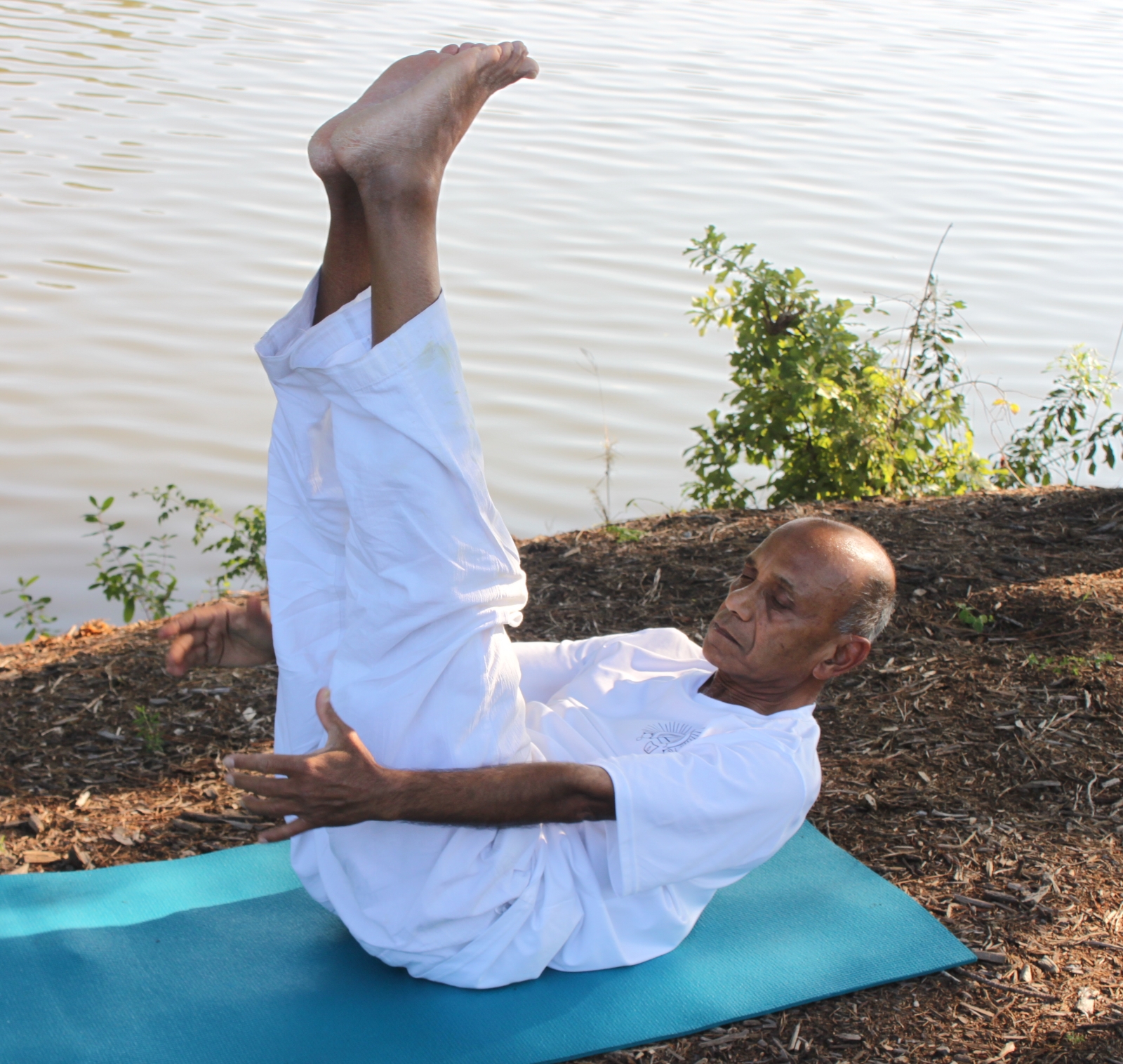
Boat Pose
Step-by-step
- Lie down on your back in Shavasana and relax for a few breaths.
- Bring the feet together and position the palms alongside the body, facing each other.
- While inhaling, lift the head and feet up. The effort is to bring the feet all the way up to a vertical position and then try to lift the head as high as it can go comfortably. Pause briefly in the final position.
- While exhaling slowly release the legs and the head down to the floor.
- Throughout these moves, try to keep the legs and arms very straight.
- Continue in this manner for 21 times. If you are unable to finish 21 rounds, do only as many as you are comfortable with.
- When you are done with the routine, relax in Shavasana for a few moments.
Tibetan Rite #5: Upward/Downward Facing Dog combination
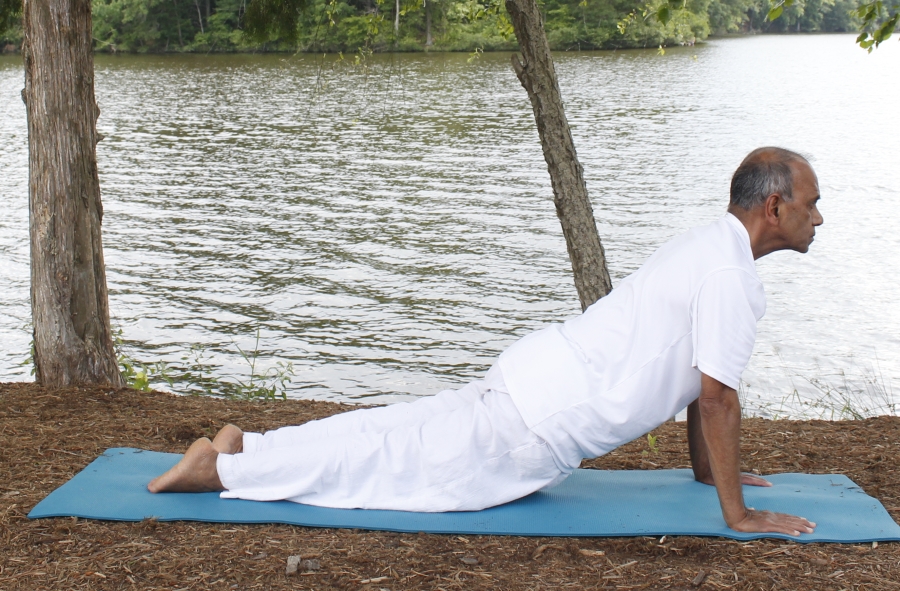
Upward Facing Dog
Step-by-step
- Start out in the downward facing dog position with the buttocks lifted up, heels pressed down and looking at the feet.
- Now, while inhaling, roll the shoulders forward until they are vertically above the hands. Lower the thighs and buttocks down without touching the floor. Keep the legs straight with the heels pushed back. Pause briefly in the upward dog position.
- While exhaling, roll the shoulders back, lifting the buttocks up and get back to the downward facing dog position. Pause briefly.
- Throughout these movements, try to keep the elbows and legs straight. The knees or thighs should not touch the floor at any time during this routine.
- Continue in this manner for 21 times. If you are unable to finish 21 rounds, do only as many as you are comfortable with.
- When you are done with the routine, relax in the child pose (Balasana) for a few moments.
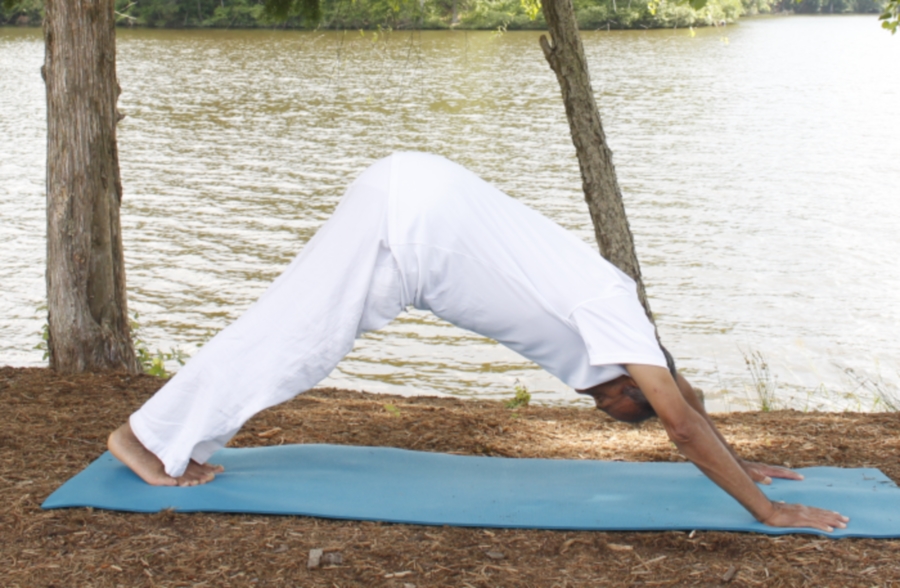
Downward Facing Dog
That completes the full sequence of the Five Tibetan Rites practice.
Finally rest in Shavasana for as long as you desire.
Dear Subash,
Thanks for this video. I found it accessible for my yoga students to practice and I like the little extras you added to make the experience more balanced.
Natasha
Thanks, Natasha. I am glad you found the video on the Five rites useful.